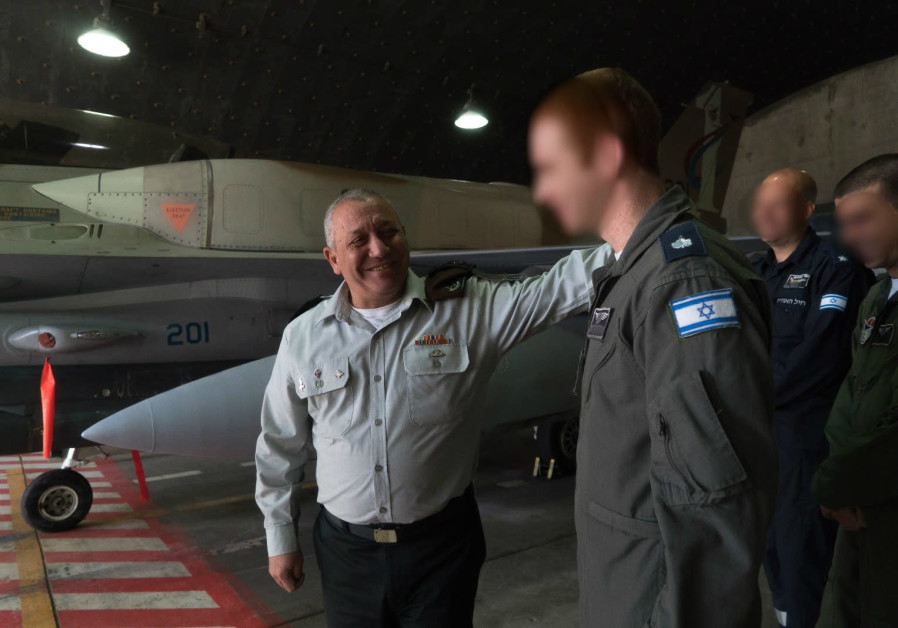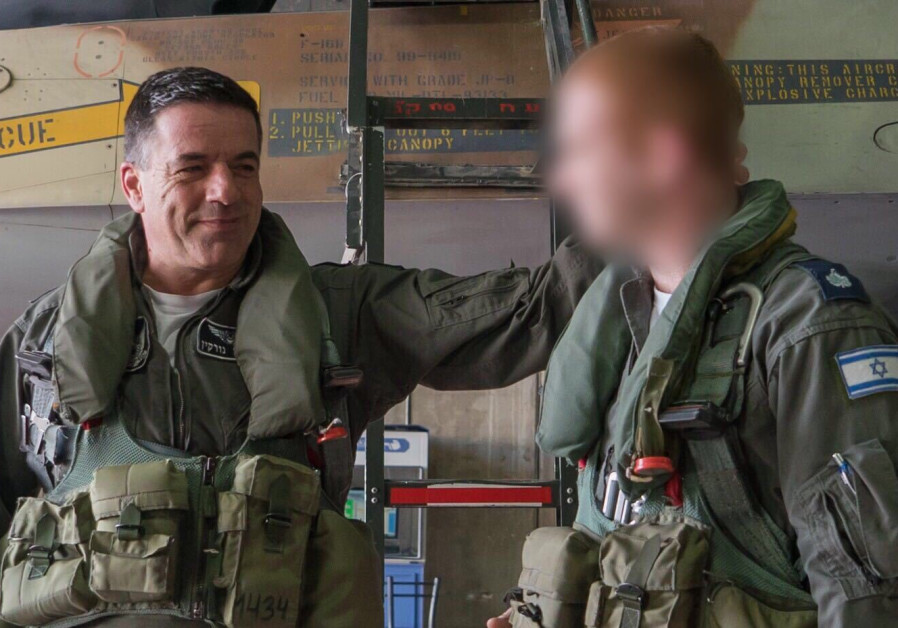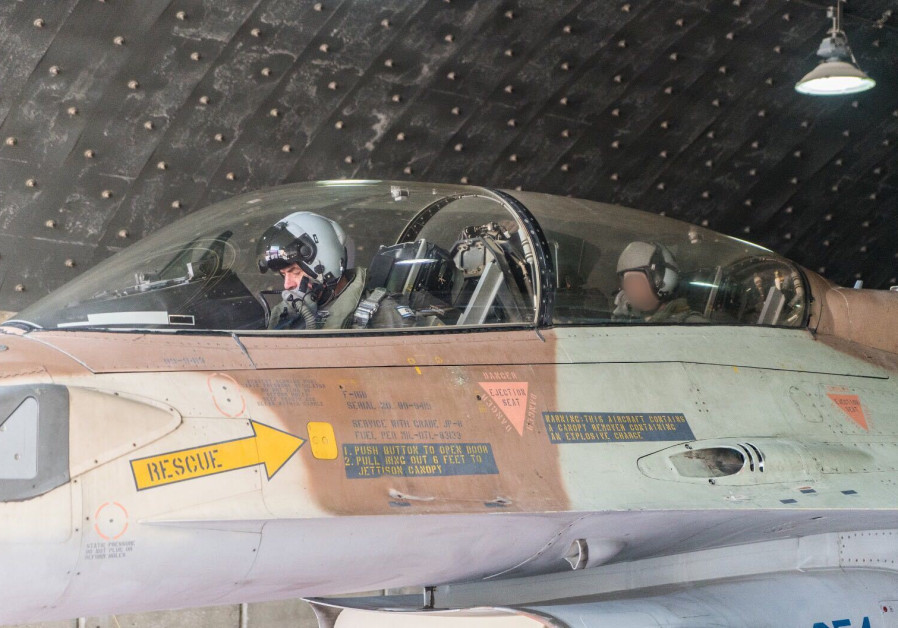Israeli Air Force investigation reveals F-16 pilot and navigator failed to follow a precise action sequence due to stress.
The downing of the F-16i jet on February 10 by a Syrian antiaircraft missile was due to an operational mistake on the part of the pilots, the IDF announced Sunday.
“Between the tension of completing the mission while facing enemy missiles, there was an operational mistake on the part of the team whose actions did not match the order of priorities required by the threat it was facing,” a senior Israel Air Force officer said, explaining that the pilots did not take the proper evasive measures.
“The moment that there is a missile threat, they had to leave their targets in the mission and react properly to the threat.”
The jet was part of two four-plane formations that were taking part in retaliatory air strikes following the infiltration of an advanced Iranian drone into Israeli airspace earlier that morning.

Thirteen Syrian antiaircraft missiles were fired at the jets during that operation and a total of 27 missiles were fired at Israeli planes on the retaliatory missions following the Iranian drone infiltration.
While the one jet was hit during the operation, another one had a missile locked onto it but was able to evade it.
IDF chief of the General Staff Lt.-Gen. Gadi Eisenkot visited the Ramon air force base Sunday morning, where he was a presented with the full investigation of the event which dealt with the entire sequence of the events of the day.
“More than once, the road to successfully carry out significant operational missions requires us to take risks,” he said. “My expectation of every fighter is that during a mission he will take the fate of the task onto his shoulders.”
According to a senior IAF officer, the infiltration of the drone was not meant to draw the Israeli planes into an ambush and that the warning systems in the downed aircraft functioned as required and provided timely warnings to the pilot.
The air force was not surprised that Syrian anti-aircraft missiles were fired at the planes as “it has occurred before,” the senior officer said, but the number of missiles fired towards Israeli jets that night was “a significant increase” from previous missions.

ISRAEL RARELY comments on foreign reports of military activity in Syria but IAF Air Division Brig.-Gen. Amnon Ein-Dar admitted that the IAF has carried out thousands of missions over the wartorn country in the past year alone. Israel has admitted to carrying out at least 100 air strikes on Hezbollah targets in Syria.
The intelligence that was in the possession of the mission planners and pilots was sufficient and provided the required response to the mission they were flying, the senior officer continued, adding that the decision to abandon the plane when it was struck by the Syrian SA-5 missile was the correct decision.
It was the first time that Israel lost an aircraft in a combat situation since 2006 and the first time in 30 years that an Israeli fighter jet was lost in a combat situation.

In leaked transcripts of their debrief, Channel 2 News quoted the pilots as saying they had no time to report on their radio that they were bailing out of the plane.
“We were very focused on the mission. Then there was an explosion and we understood we were hit. It is a very uncomfortable feeling, the loss of control,” read the transcript.
“There is no long process and also there is no time. A few seconds. The understanding [was] that we need to quickly eject as a result of the physical damage to us and also as a result of the damage to the plane that ceased to function,” they were quoted as saying.
“We were extremely lucky. The missile exploded close to the plane and the force of the explosion could have killed us. The missile exploded at a certain distance from the plane and its shrapnel was enough to damage the plane,” the transcript said.
IAF commander Maj.-Gen.Amikam Norkin emphasized in his summary of the investigation into the crash that the episode “is an opportunity for the IAF” to learn, adding that the “in-depth investigation reflects the learning at all levels, both at headquarters and in the field, and it will make the IAF better.”
Both the pilot and the navigator, who were both injured during the incident, have since been released from the hospital.
Last week, the navigator, Maj. A, who was lightly wounded, returned to his squadron and flew his first returning flight with Norkin.
The pilot, who was seriously injured, is expected to return to full operational duties following his recovery.



COMPUTER PASSWORD CAUSED .65 NANOSEC DELAY. BLAME PILOT ERROR.
TAPE ME TO WING, I WANNA GO ON THEIR NEXT
MISSION